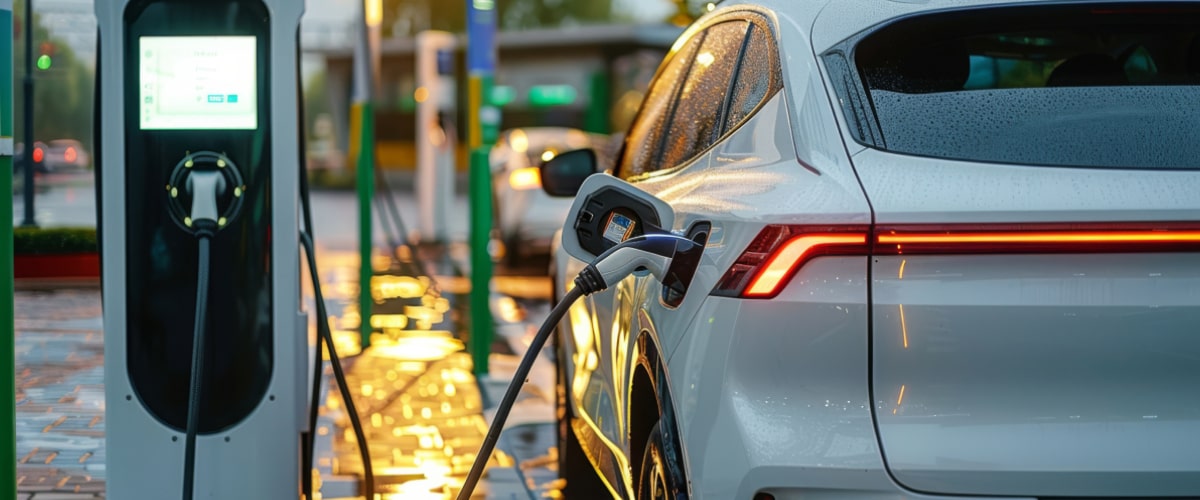How Hybrid & Electric Vehicles Work: A Guide to the Future of Driving
With the automotive industry rapidly shifting towards cleaner, more sustainable energy solutions, hybrid and electric vehicles (EVs) have become increasingly popular. These vehicles offer an eco-friendly alternative to traditional gas-powered cars, combining advanced technology with efficiency. But how exactly do they work? Let’s dive into the essential components that power hybrid and electric vehicles and explore how they deliver a smoother, greener, and more efficient ride.
The Basics of Hybrid and Electric Vehicles
Both hybrid and electric vehicles are designed to reduce fuel consumption and emissions, but they achieve this in different ways.
- Hybrid Vehicles: A hybrid vehicle uses both a gasoline engine and an electric motor to operate. The electric motor assists the gasoline engine, especially during acceleration, which reduces the amount of fuel consumed. The battery that powers the electric motor is charged through regenerative braking and sometimes by the gasoline engine itself.
- Electric Vehicles (EVs): Electric vehicles, on the other hand, rely solely on electric power. They run on energy stored in a rechargeable battery, which powers the electric motor. Unlike hybrids, EVs don’t have a gasoline engine and produce zero emissions, making them an even cleaner option.
Essential Components of Hybrid and Electric Vehicles
- Electric Motor The electric motor is at the heart of both hybrid and electric vehicles. In hybrids, it works alongside the gasoline engine to provide extra power, reducing the workload on the engine and thus conserving fuel. In EVs, the electric motor is the sole power source, converting electricity from the battery into mechanical energy to drive the wheels.
- Battery Pack The battery pack stores the energy needed to power the electric motor. In hybrids, the battery pack is usually smaller, as it only assists the gasoline engine. However, in fully electric vehicles, the battery is much larger, as it’s the primary power source. EV batteries are typically made of lithium-ion due to their efficiency, longevity, and high energy density. The battery pack can be recharged using an external power source or through regenerative braking, depending on the vehicle type.
- Regenerative Braking System Regenerative braking is a critical feature in hybrid and electric vehicles. It converts the kinetic energy produced when braking into electrical energy, which is then stored in the battery. This process helps extend the battery life and improves overall efficiency. In traditional vehicles, this energy is wasted as heat, but in hybrids and EVs, it’s captured and used to power the electric motor.
- Power Control Unit (PCU) The power control unit manages the flow of electricity between the battery, motor, and generator (if applicable). In hybrids, the PCU decides when to use the gasoline engine, the electric motor, or both, depending on driving conditions. For EVs, it controls the amount of power drawn from the battery and supplied to the motor, ensuring smooth and efficient performance.
- Onboard Charger In electric vehicles, the onboard charger converts the alternating current (AC) from a charging station into direct current (DC) to charge the battery. This system manages the charging speed, protecting the battery and optimising charging times.
How Hybrid & Electric Vehicles Work Together for Efficiency
In hybrid vehicles, the gasoline engine and electric motor work in tandem to maximise efficiency. During city driving, where stopping and starting are frequent, the electric motor does most of the work, reducing fuel consumption. When the car needs extra power, such as during acceleration or highway driving, the gasoline engine kicks in to provide additional support. This balance between the two systems allows hybrids to deliver better fuel economy than traditional vehicles.
For EVs, efficiency is all about how effectively the battery and motor can convert stored electrical energy into movement. With no need for a gasoline engine, electric vehicles operate quietly and produce zero emissions. Many EVs now come with advanced regenerative braking systems, which improve their range by recapturing energy that would otherwise be lost.
The Future of Driving
Hybrid and electric vehicles represent the future of driving, offering a cleaner, more sustainable alternative to traditional vehicles. As battery technology improves and charging infrastructure expands, EVs will become even more accessible and practical for everyday use. By understanding how these vehicles work, drivers can make informed choices about maintaining them and enjoying the full benefits of eco-friendly transportation.
Whether you’re driving a hybrid or an electric vehicle, Priority Automotive is here to help you keep it in peak condition. Our team is equipped to service both hybrid and EV systems, ensuring your vehicle runs smoothly and efficiently as you embrace the future of driving.

